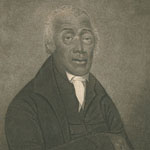
|
The Revd. Richard Allen, Bishop of the First African Methodist Episcopal Church in the U. States. Stipple engraving by John Boyd, after the oil painting by Rembrandt Peale (Philadelphia, 1823).
|
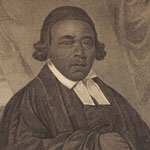
|
The Revd. Absalom Jones, Rector of St. Thomas’s African Episcopal Church in the City of Philadelphia. Stipple engraving by W. R. Jones & John Boyd, after the oil painting by Rembrandt Peale Philadelphia, ca. 1820). Courtesy of Mother Bethel Church. |
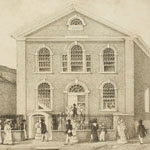 |
A Sunday Morning View of the African Episcopal Church of St. Thomas in Philadelphia. Lithograph by W. L. Breton (Philadelphia, 1823). Courtesy of the Historical Society of Pennsylvania. |

|
Detail of Bethel African Methodist Episcopal Church. Lithograph by W. L. Breton (Philadelphia, 1829).
The first independent black churches were erected in 1794; St. Thomas in a new building on Fifth Street near the State House, and Bethel in an abandoned blacksmith’s shack purchased by Allen and set up on a lot at Sixth and Lombard streets, still the site of the church. The two black leaders and others began planning for an independent black church in 1787 but an act of racial discrimination made the work urgent. Allen’s powerful preaching and Jones’s organizing skills drew many blacks to St. George’s Methodist Church. In 1792 the white church authorities ordered black parishioners to segregate themselves in a newly constructed balcony and physically dragged praying blacks away from the front of the church. The blacks walked out en masse, doubly determined to create their own church. Many, angered at the Methodists, turned towards the Episcopalians and with Jones created St. Thomas Church. Allen remained a committed Methodist and led his flock into Bethel Church. For several years Allen fought with Methodist authorities who tried to take control of Bethel and its ministry. Later, in 1816, Bethel became the founding church in the first national African American organization, the African Methodist Episcopal Church. |
 |
Revd. John Gloucester, Late Pastor of the First African Presbyterian Church in Philadelphia. Stipple engraving by Benjamin Tanner & W. R. Jones, after the oil painting by John Robinson (Philadelphia, 1823).
The bright and pious Tennessee slave John Gloucester was the protégé of his master the Rev. Gideon Blackwell, who brought him to Philadelphia in 1807 to support the Presbyterian evangelical movement in the black community. He was a talented and powerful preacher, in private homes and on the streets, and local Presbyterians were impressed and supportive. In 1811, he helped break ground for the First African Presbyterian Church at Seventh and Shippen Streets (Bainbridge Street today), with a congregation of 123 blacks. Though Gloucester was freed, his family was still enslaved in Tennessee. Working and saving, he finally purchased their freedom in 1819. |
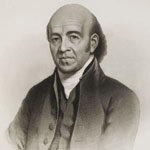 |
“The Rev. Morris Brown of Philadelphia.” Engraving by John Sartain in Daniel Alexander Payne, History of the African Methodist Episcopal Church (Nashville, 1891).
Morris Brown ministered to a large congregation of free blacks and slaves at the African Methodist Episcopal Church in Charleston, South Carolina. In 1822 during the agitation over the alleged Denmark Vesey conspiracy, white authorities suppressed the church as a hotbed of insurrectionary sedition. Brown, facing certain arrest, fled to Philadelphia and Bethel Church. Following the death of Richard Allen in 1831, Brown became the second Bishop of the African Methodist Episcopal Church. |
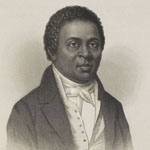 |
“Peter Williams, the Old Colored Sexton of the John St. Methodist Church.” Engraving by Alexander H. Richie in J. B. Wakely, Lost Chapters Recovered from the Early History of American Methodism (New York, 1858).
The New York slave Peter Williams was purchased by the John Street Methodist Church in 1783, where he was a trusted worker and served as sexton and undertaker. He purchased his freedom in 1796 and set up as a tobacconist and undertaker, acquired property, and became a leader in the free black community. Also in 1796 he and other blacks formed a separate black worship group and in 1801 established their own African Methodist Episcopal Church. In conferences in 1820 and 1821 they joined with other independent black Methodists to form the African Methodist Episcopal Zion Church, independent of Richard Allen’s group. His son, Peter Williams Jr., followed his father into the church and was a leading black abolitionist in New York. |
Richard Allen met his second wife when she was part of his black nursing corps tending victims of the yellow fever epidemic in Philadelphia in 1793. In the church she helped organize the many women’s groups that provided a religious and social life for black women and helped develop their organizing abilities. She was an inspiration to many women of the church, including Jarena Lee. Sarah Allen encouraged Lee’s mission and urged her to write her autobiography, first appearing as a pamphlet in 1836.
|
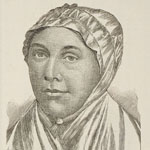 |
“Sarah Allen,” illustration in Proceedings of the Quarto- Centennial Conference of the African M. E Church, of South Carolina (Charleston, 1890).
|
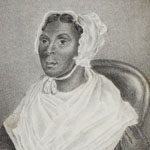 |
“Jarena Lee,”frontispiece illustration in Jarena Lee, Religious Experience and Journal of Mrs. Jarena Lee (Philadelphia, 1849). |
| |
|
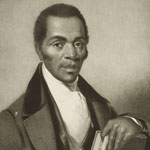 |
The Revd. Henry Simmons, Paster of the First Incorporated African Baptist Church in the City of Philadelphia. Lithograph by Albert Newsam after an oil painting by Joseph Kyle (Philadelphia, 1838). Courtesy of the Historical Society of Pennsylvania.
Henry Simmons was a Virginia slave who purchased his freedom and moved to Philadelphia in the early 1800s. Like many southern migrants, he was a Baptist and on arrival set about organizing a Baptist congregation. Working as a ragman, he saved enough to purchase a small plot of land and in 1809 founded the African Baptist Church on Tenth Street near Vine. |









